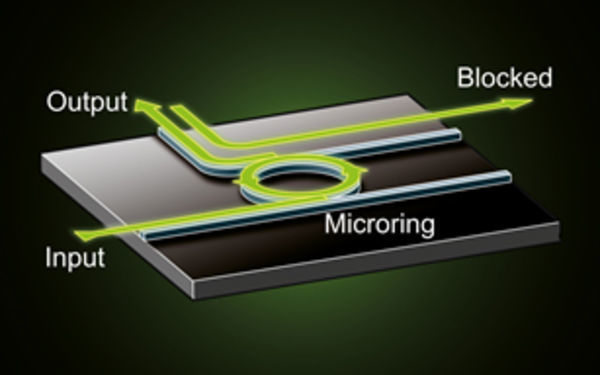Scientists have created an optical diode consisting of light
Researchers from the American National Physical Laboratory (NPL) have created the first-of-its-kind optical diode, consisting of light, which can be used in miniature photon and photon-electronic circuits. This optical diode, like its electronic counterpart, passes light only in one direction, but its main advantage is the small dimensions of the device and the lack of need to use large powerful permanent magnets, which are part of other types of optical diodes.
Diodes are essential components of most electronic circuits. They pass the electric current in one direction and block the passage of the electric current in the opposite direction. This diode function is used in a wide variety of areas of electronics, from detecting extremely weak radio signals to powerful power straighteners capable of turning alternating electric current into permanent ones.
The basis of the new optical diode is a ring resonator, a glass ring installed on the surface of a silicon chip. The size of this ring roughly corresponds to the diameter of the human hair, and the diode effect is caused by the creation of a rotating optical field inside the resonator.

The ring resonator is inflated with light from an external source. “Given the tiny size of the device itself, the specific power of the light circulating in the resonator is comparable to the power of all the spotlights used to illuminate a large stadium,” says Dr. Jonathan Silver, lead researcher, “Due to this high concentration of energy in the resonator, it creates an optical diode that works through one of the types of light interactions called the Kerr effect.”
Experiments conducted with the device showed that inside the glass resonators the electromagnetic field rotates clockwise. At the same time, the light, sent to the device in the same direction, passes through it unhindered, and the light, cast in the direction of counterclockwise, is blocked.
“The presence of this diode paves the way for the creation of low-cost microphoton circuits and chips that can form the basis of optical computing technologies,” says Pascal Del’Haye, one of the researchers, “In addition, new diodes can be used in optical telecommunications, providing more efficient use of existing fiber optic networks.” So
urce: www.dailytechinfo.org